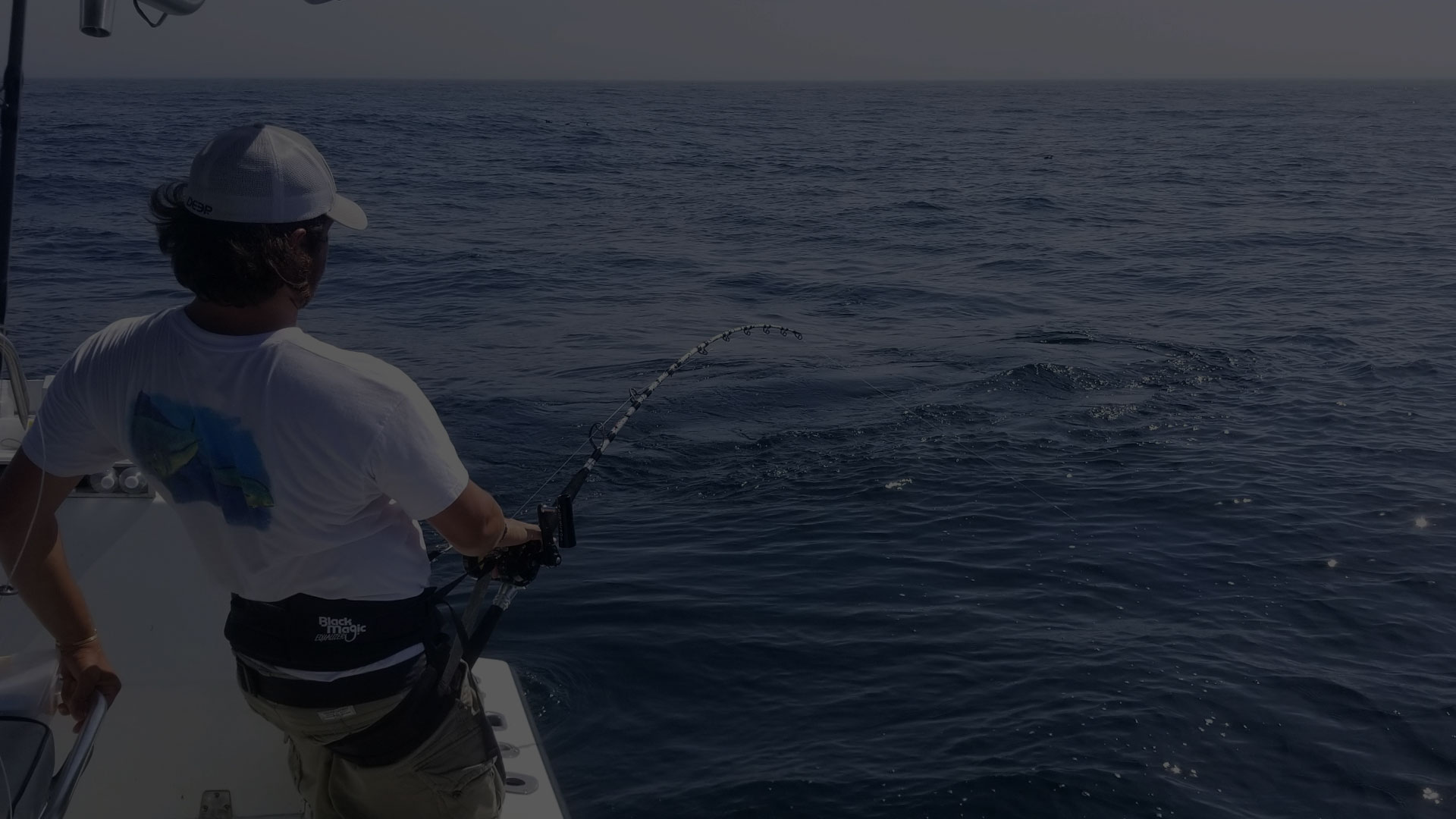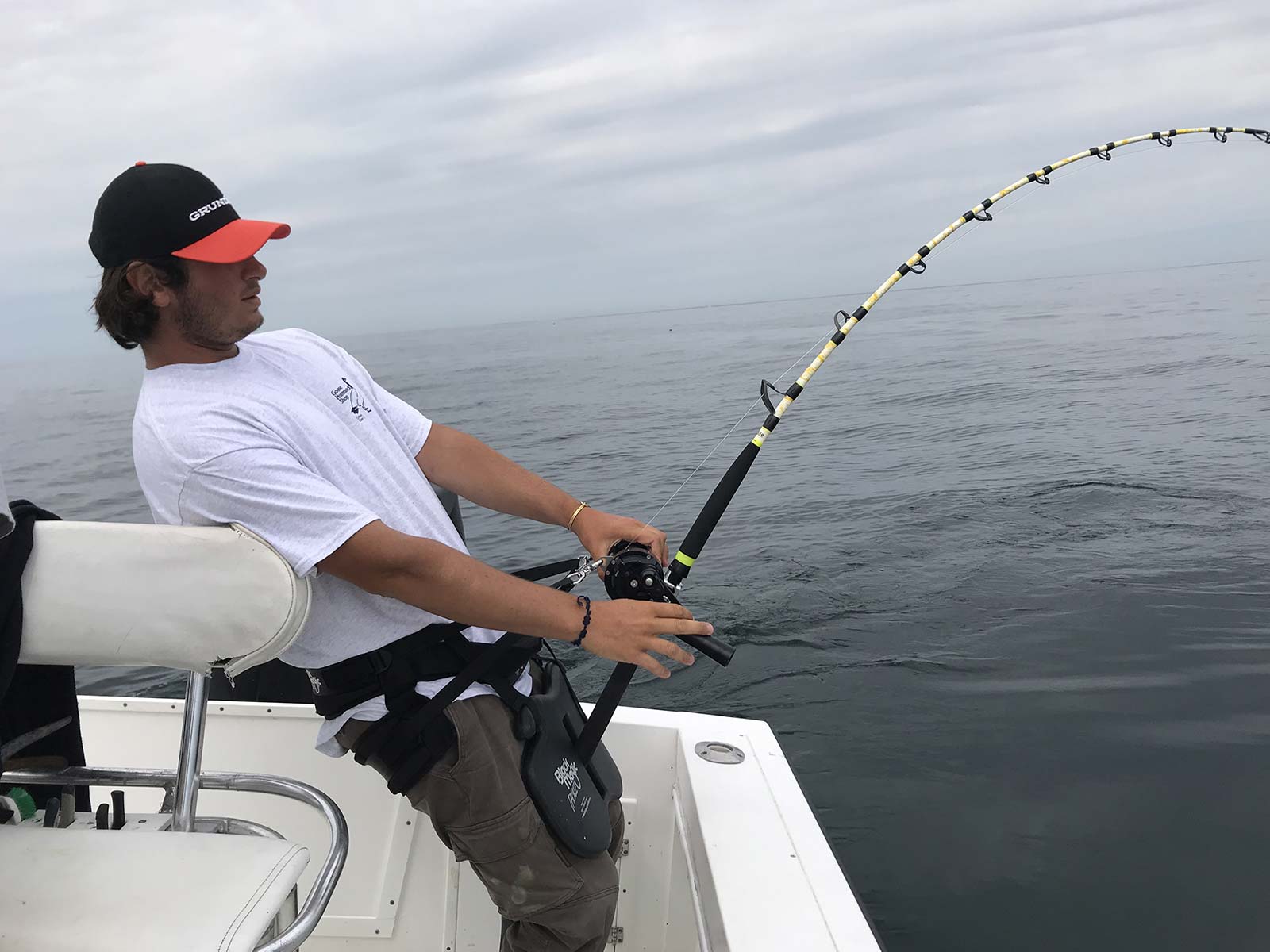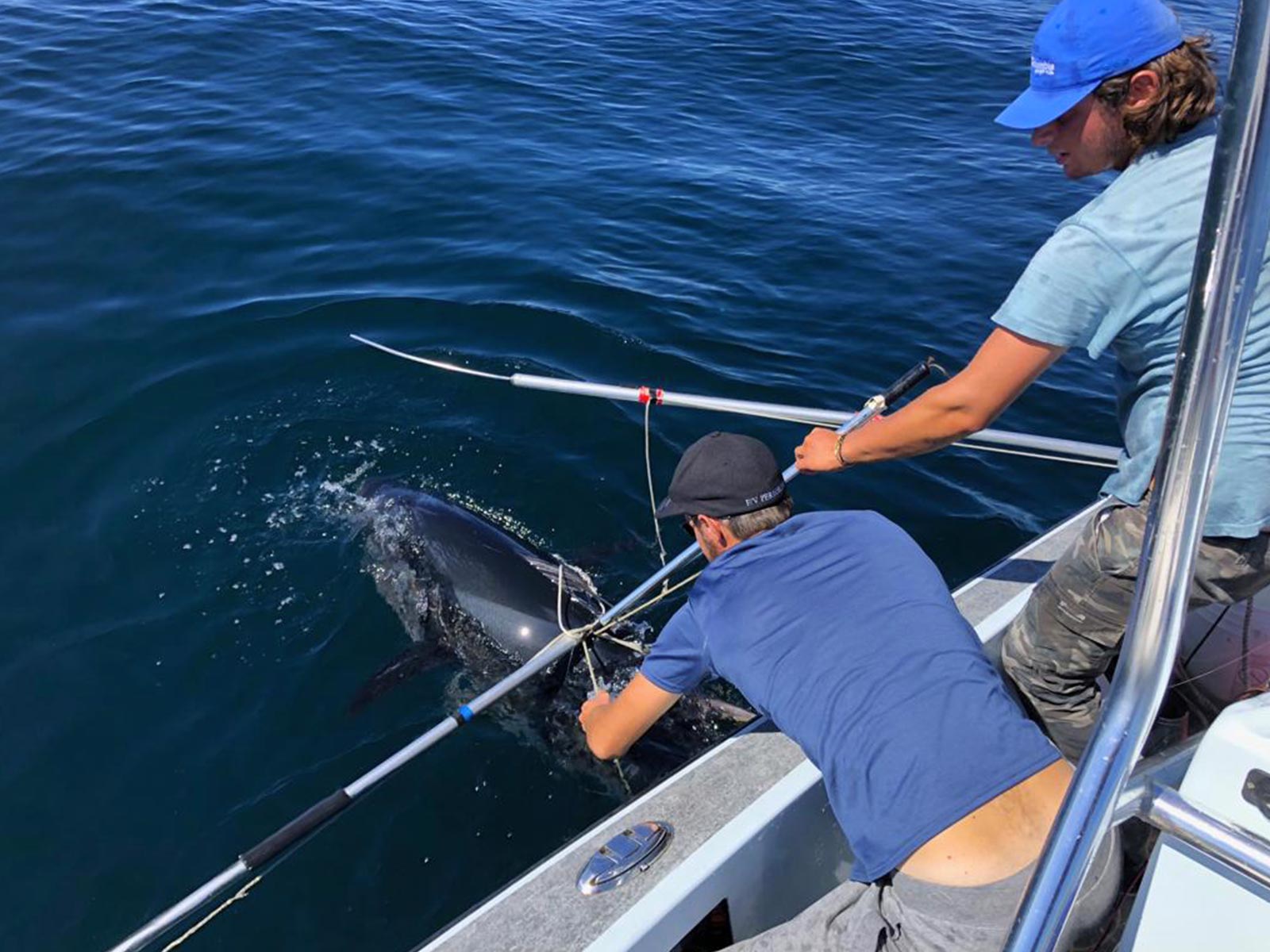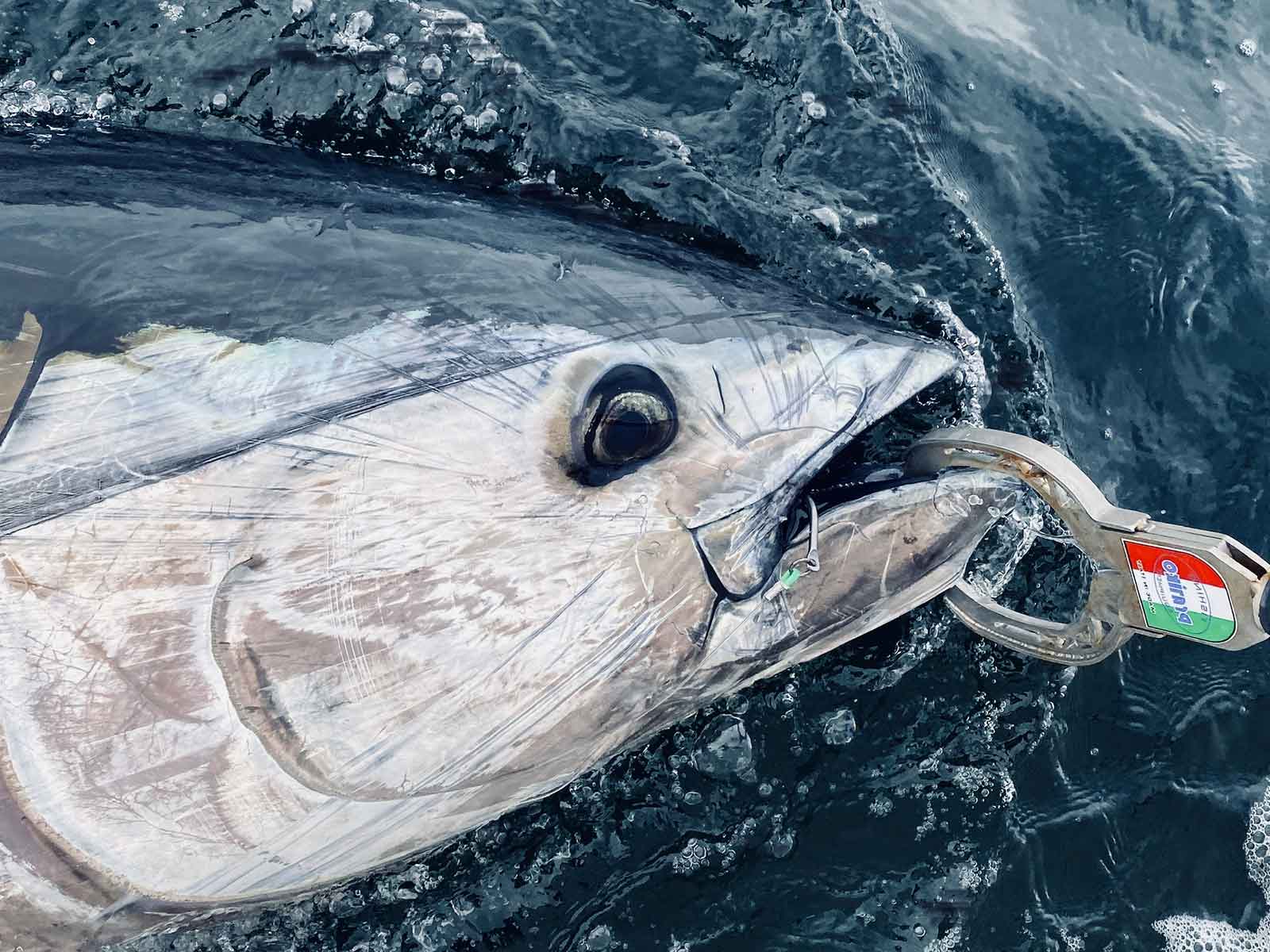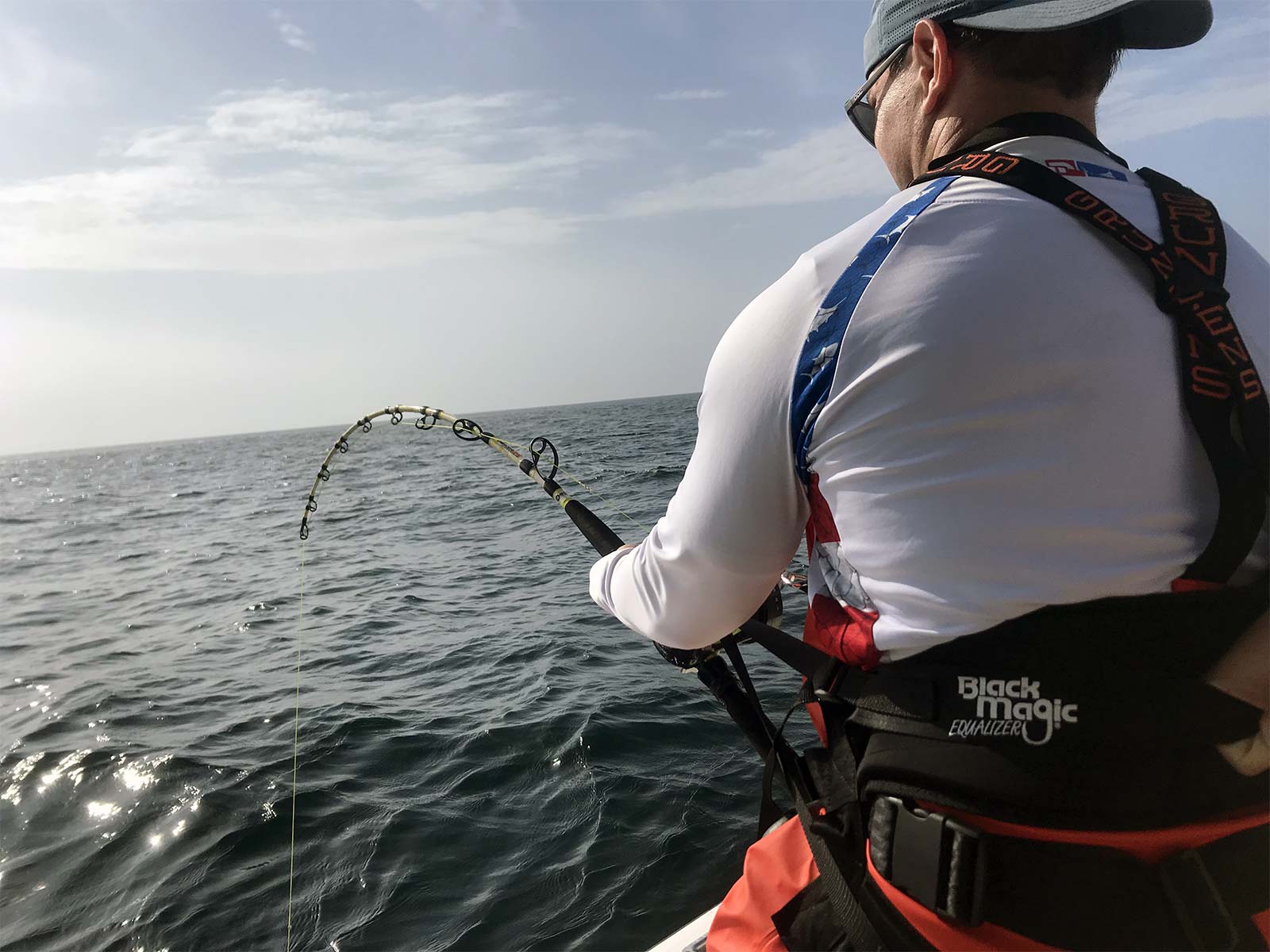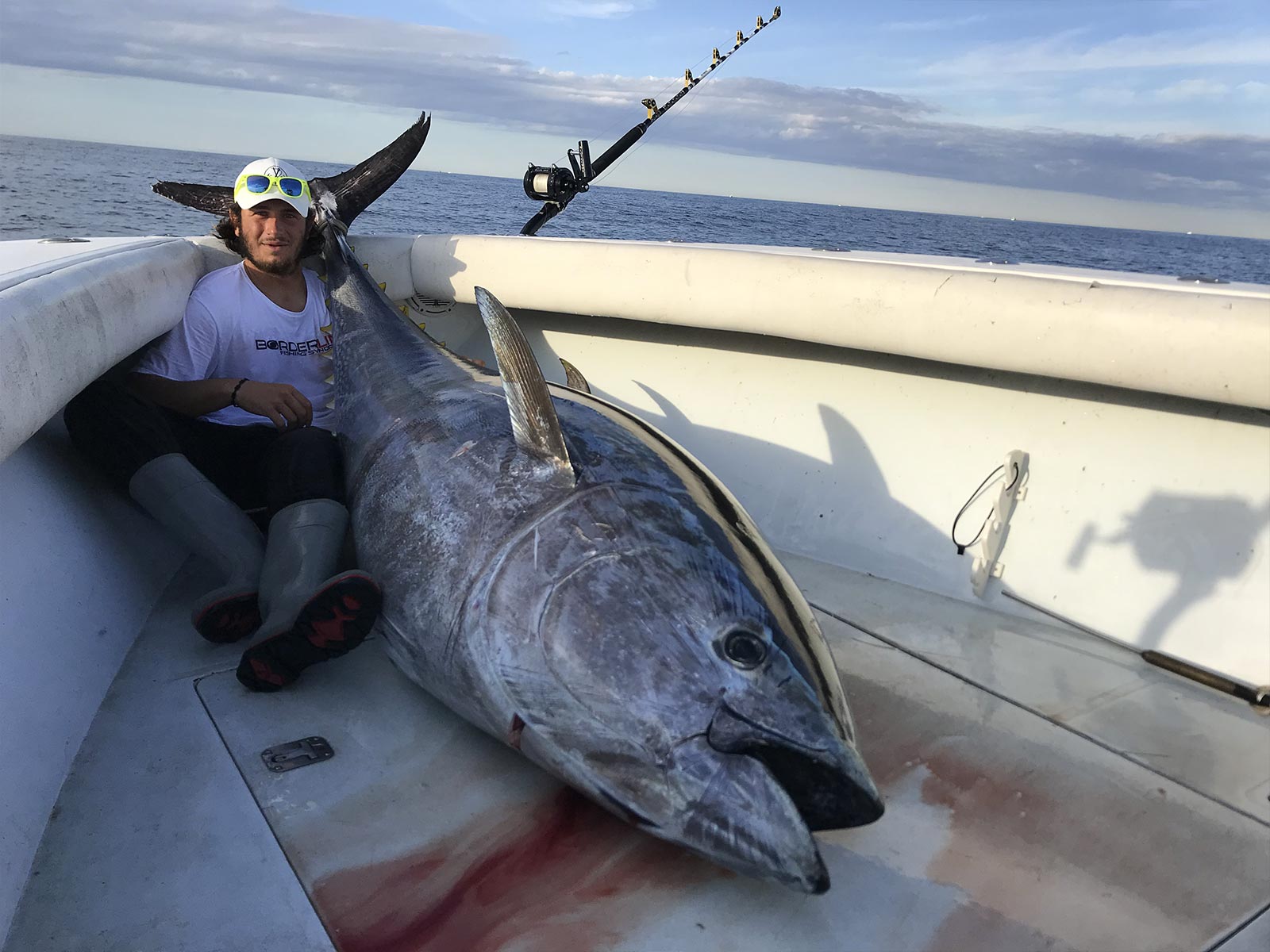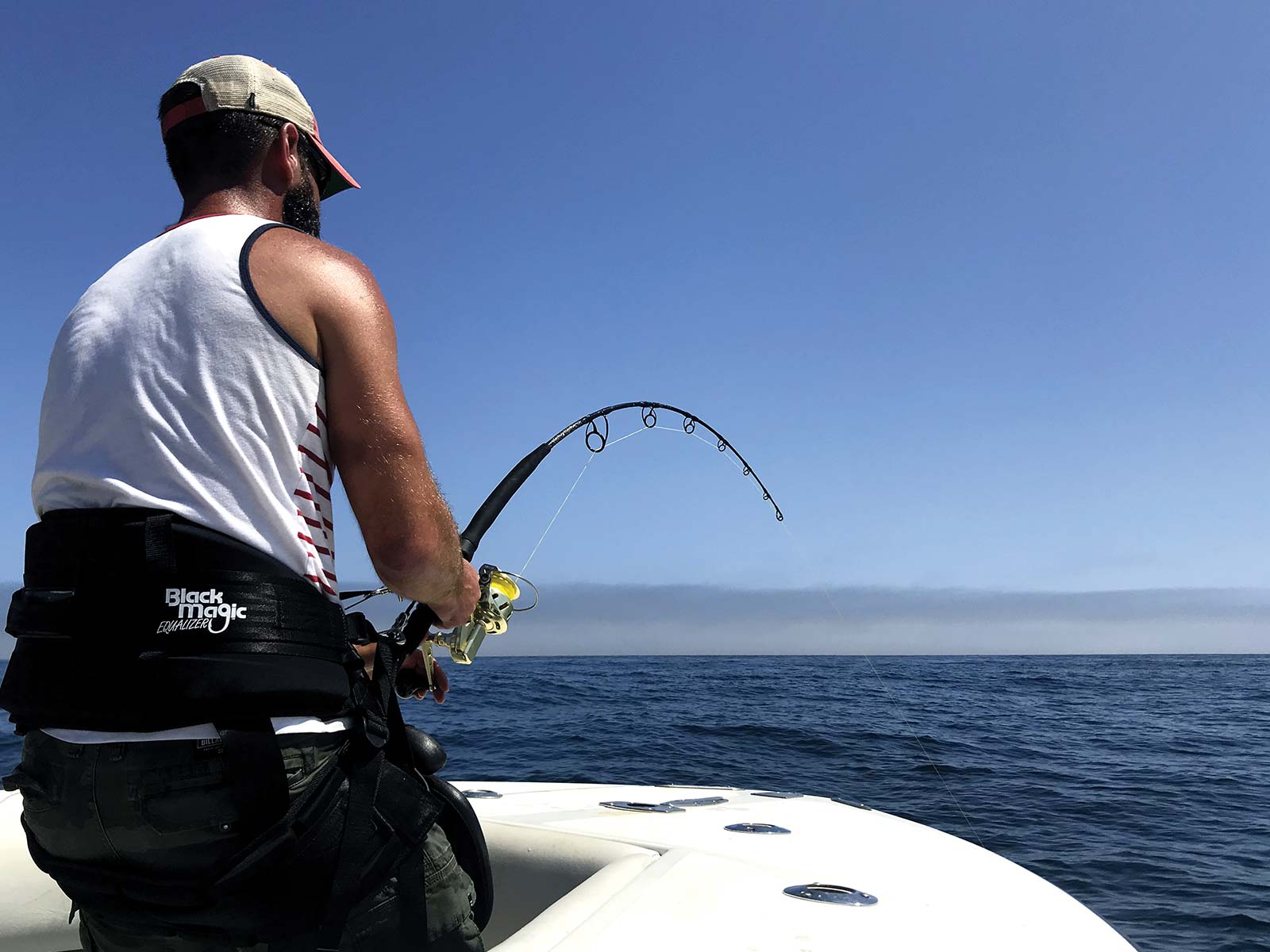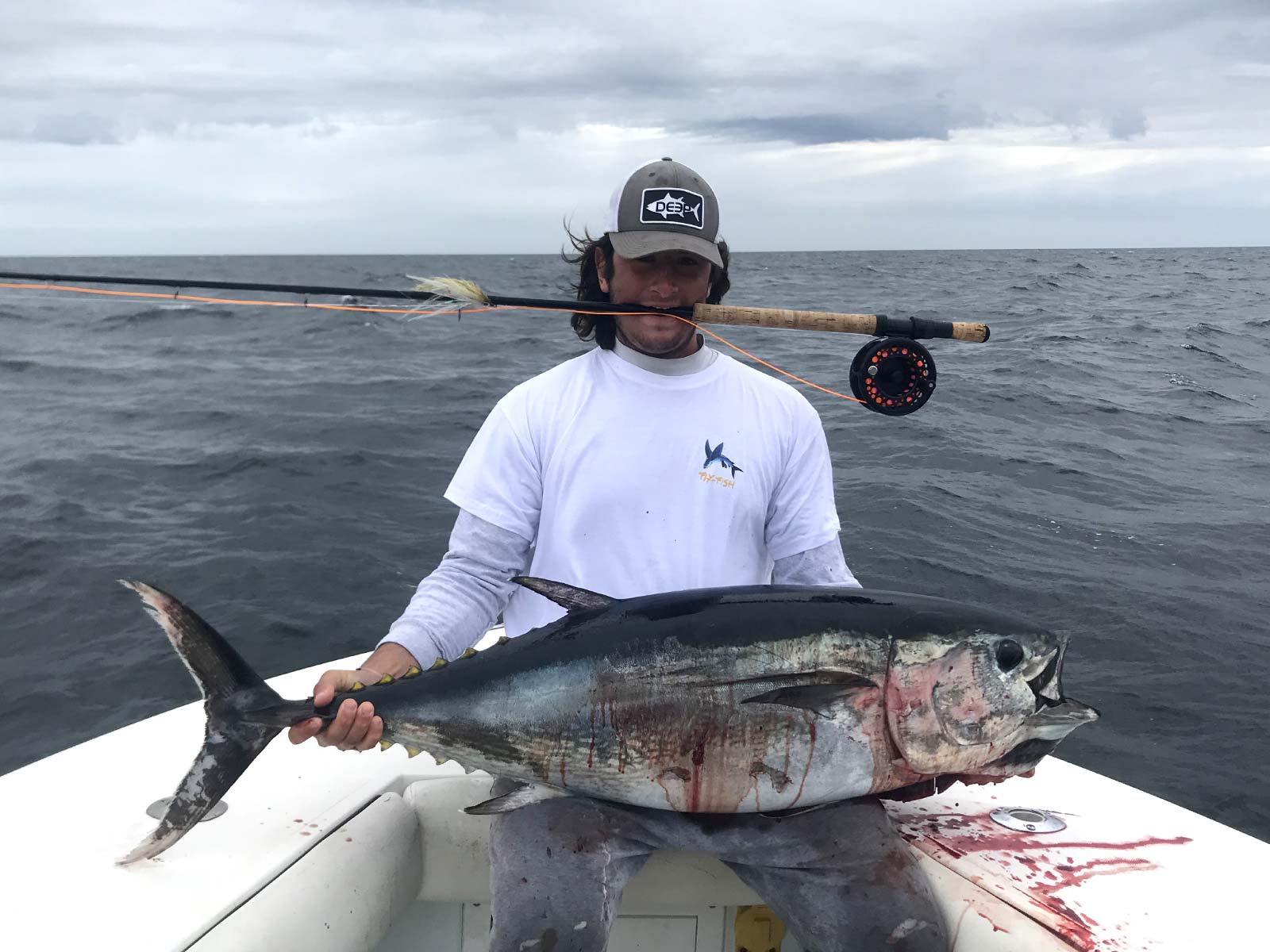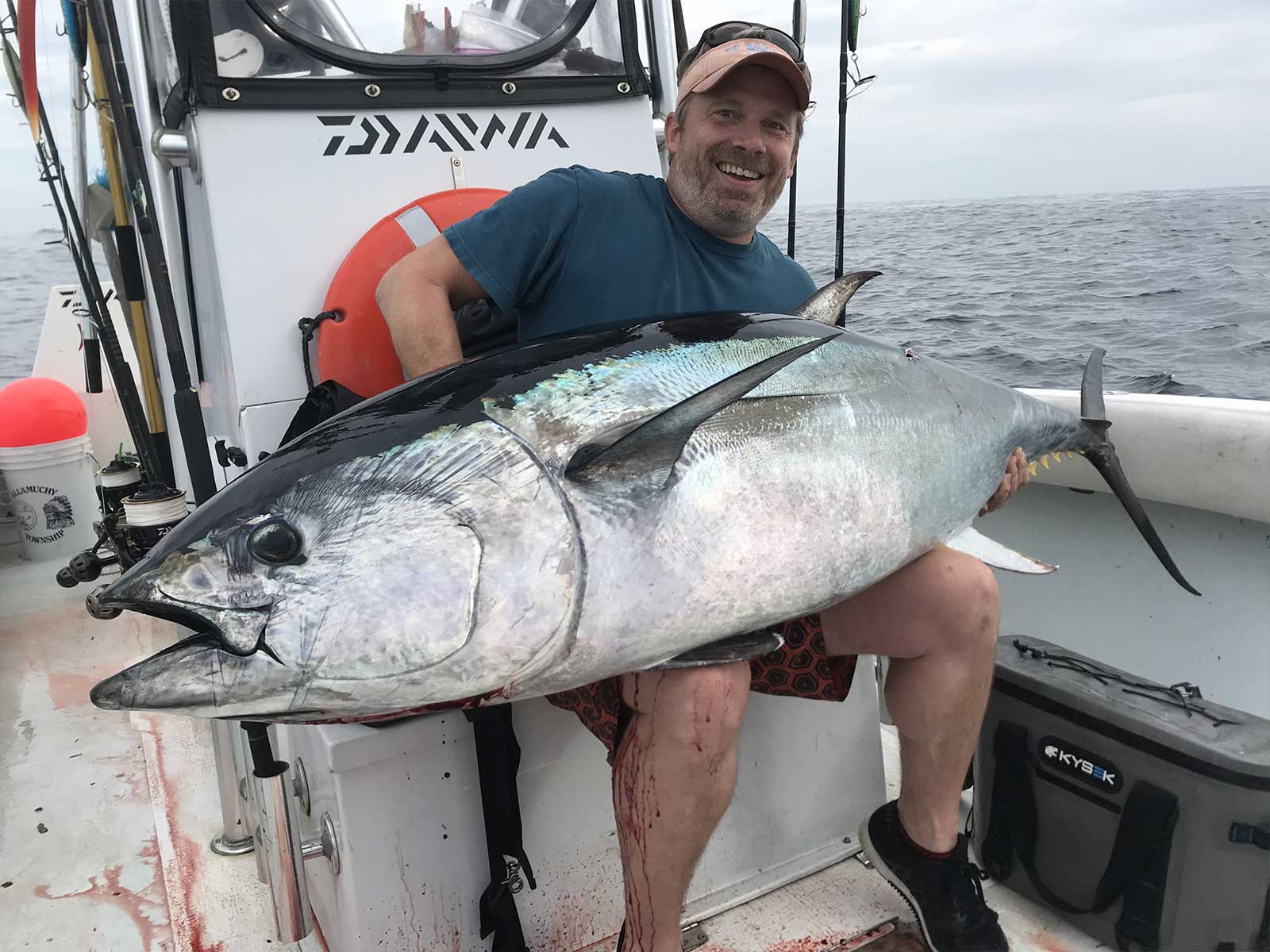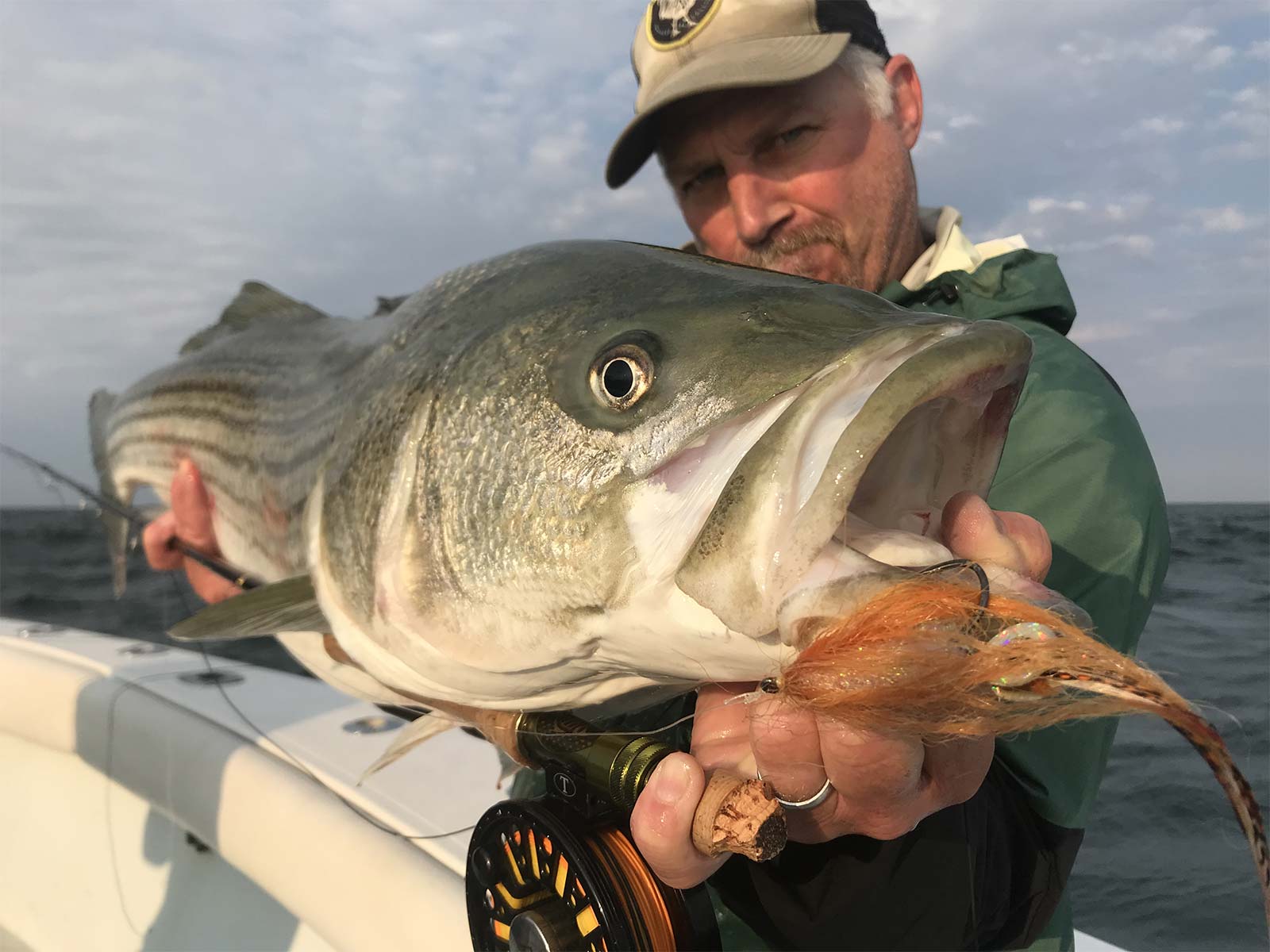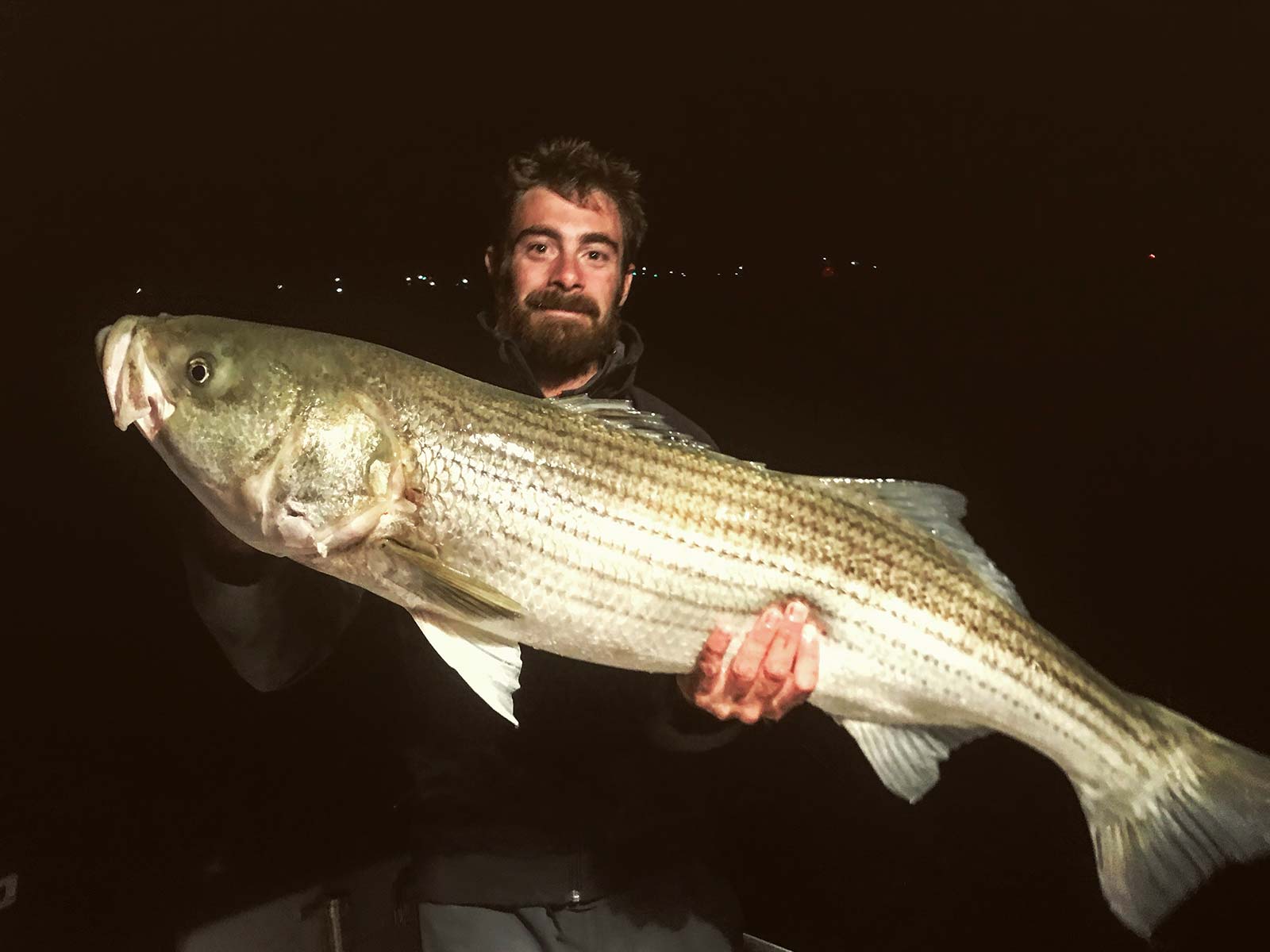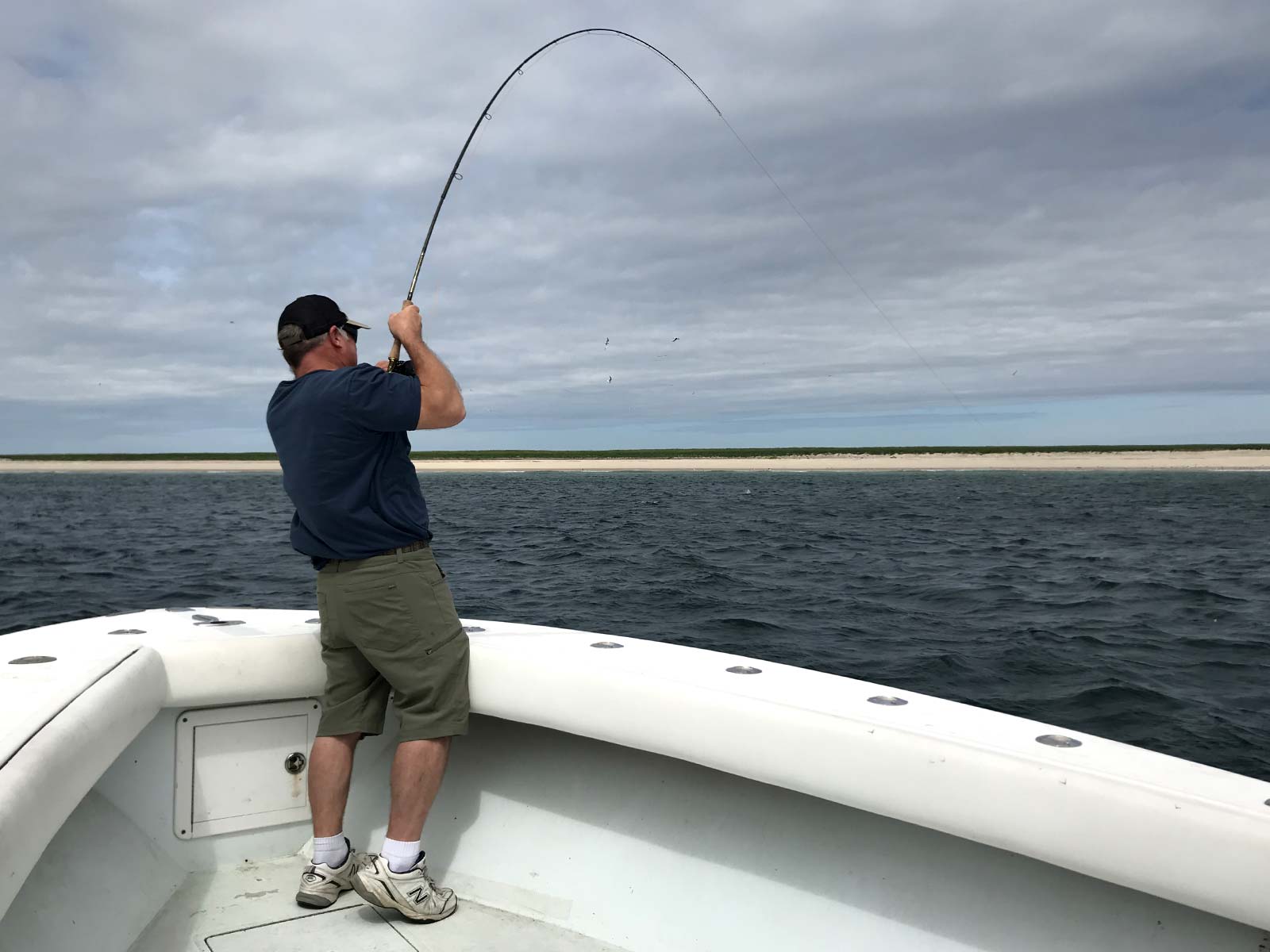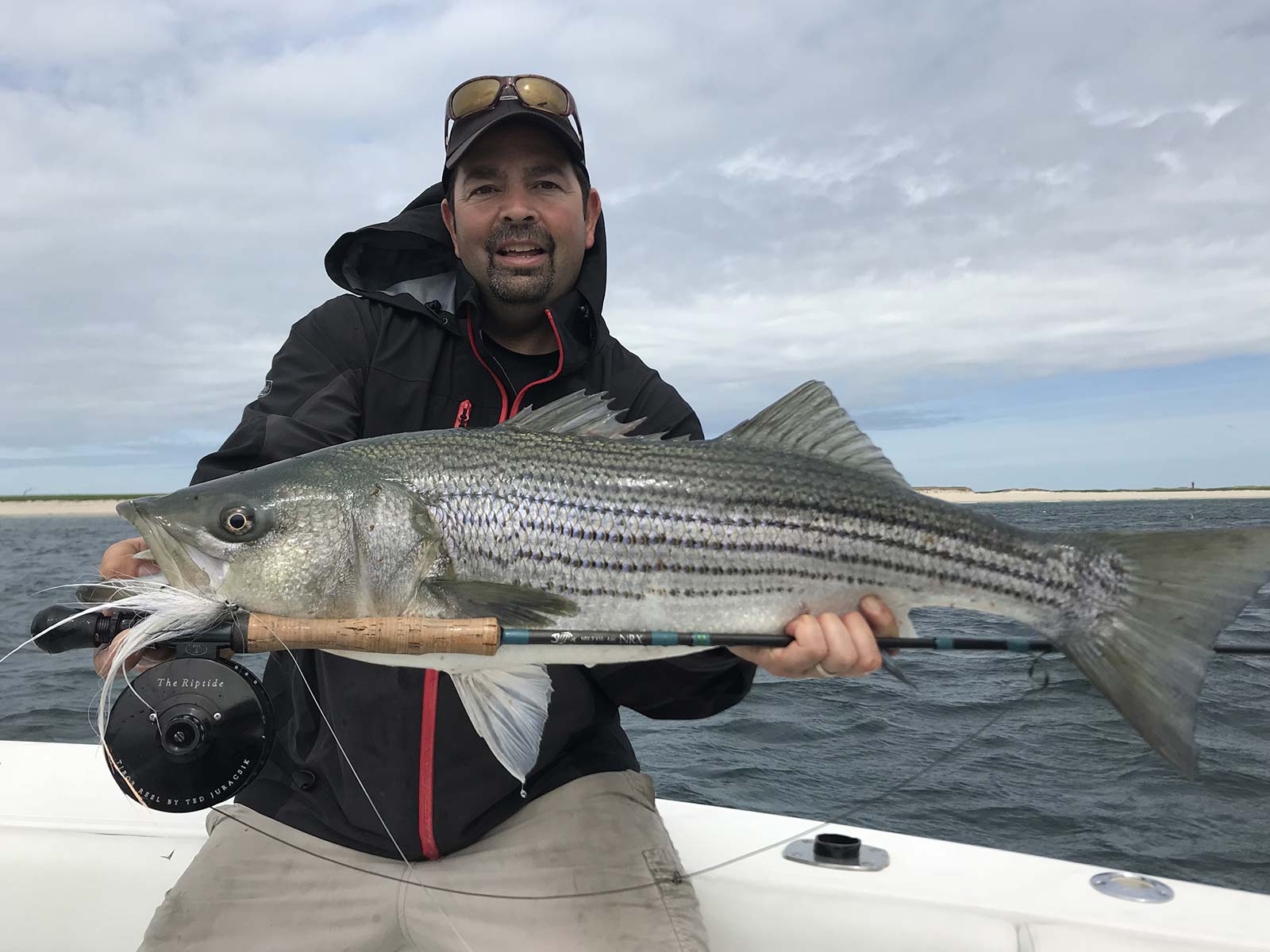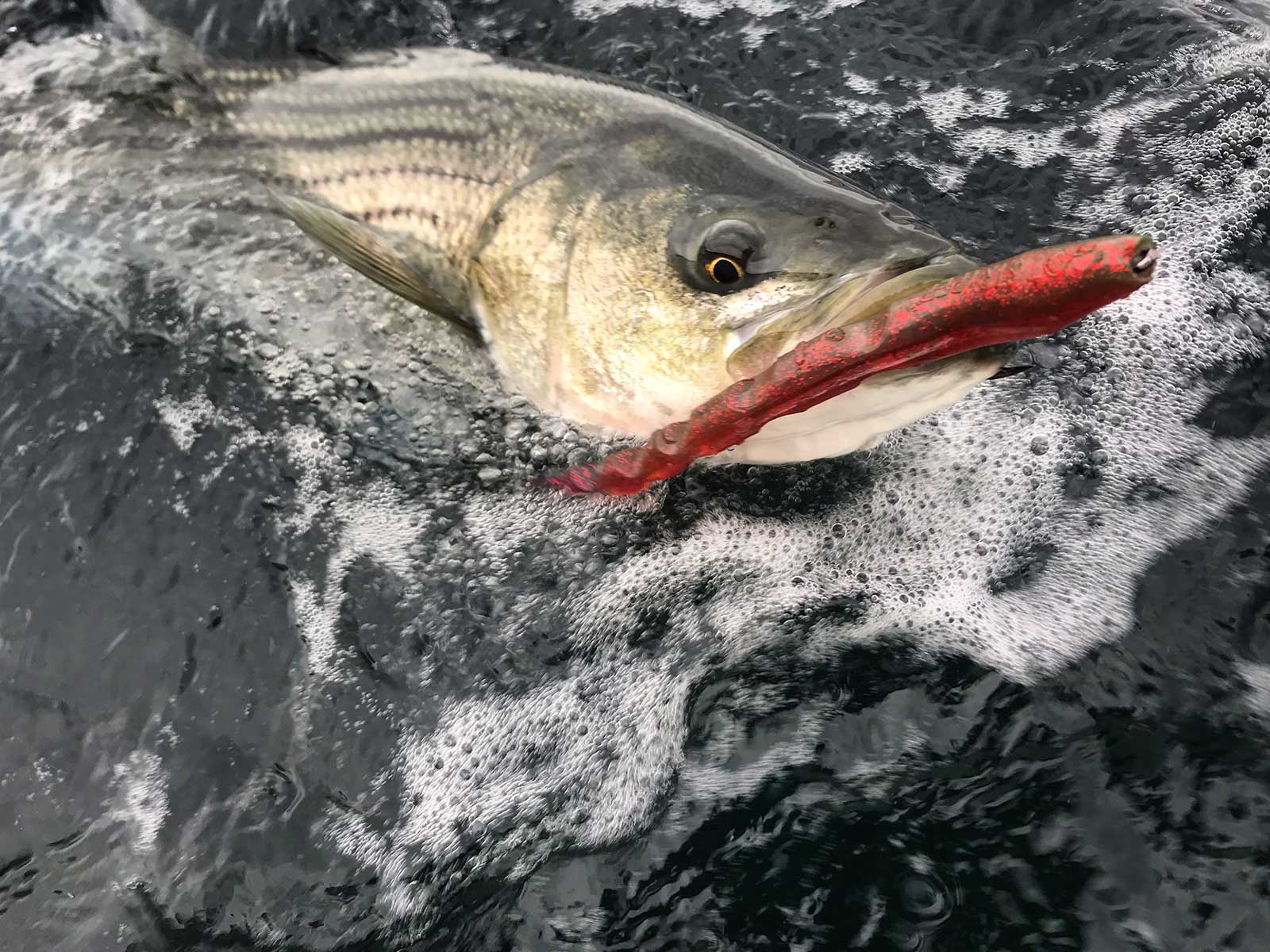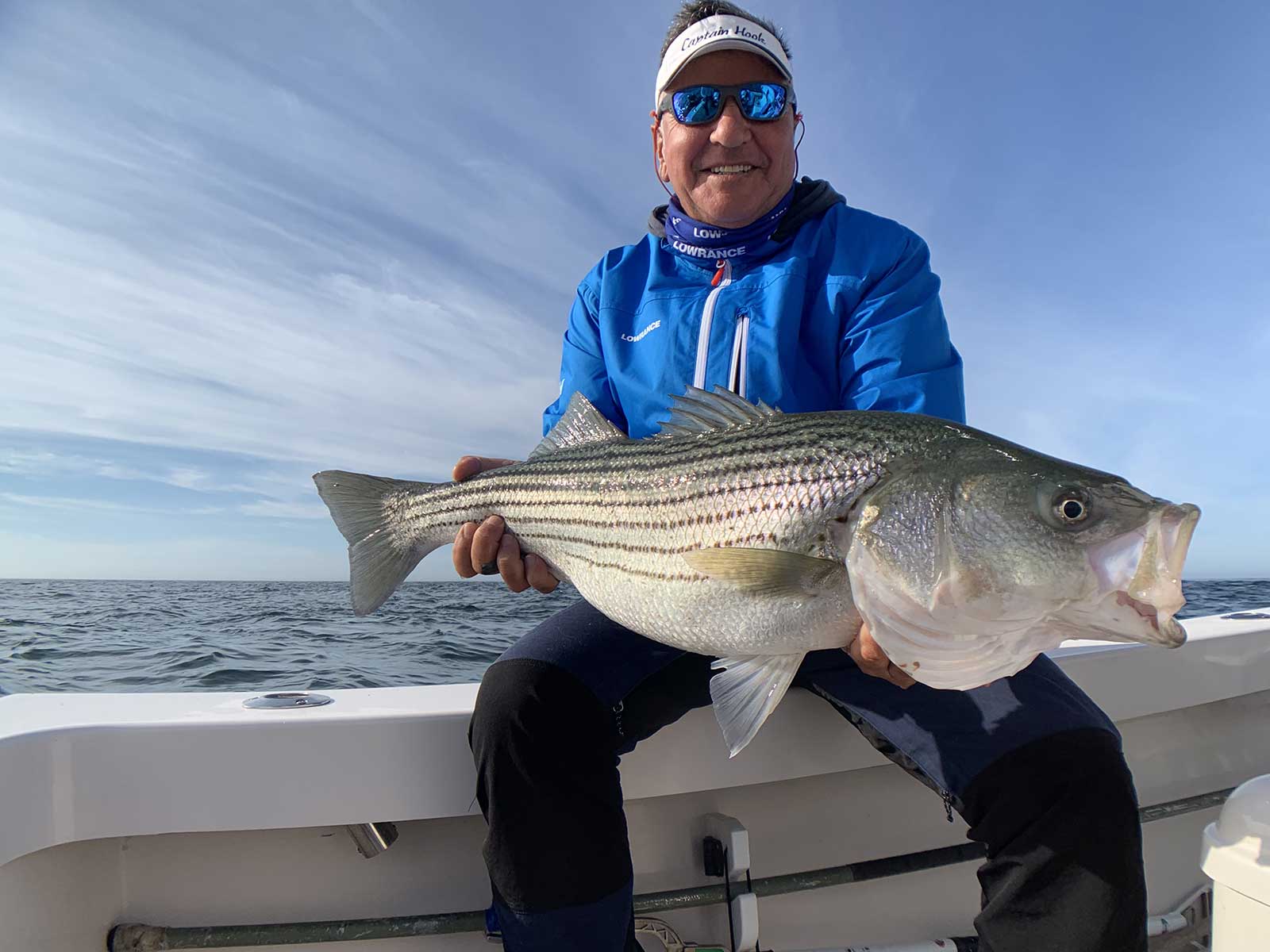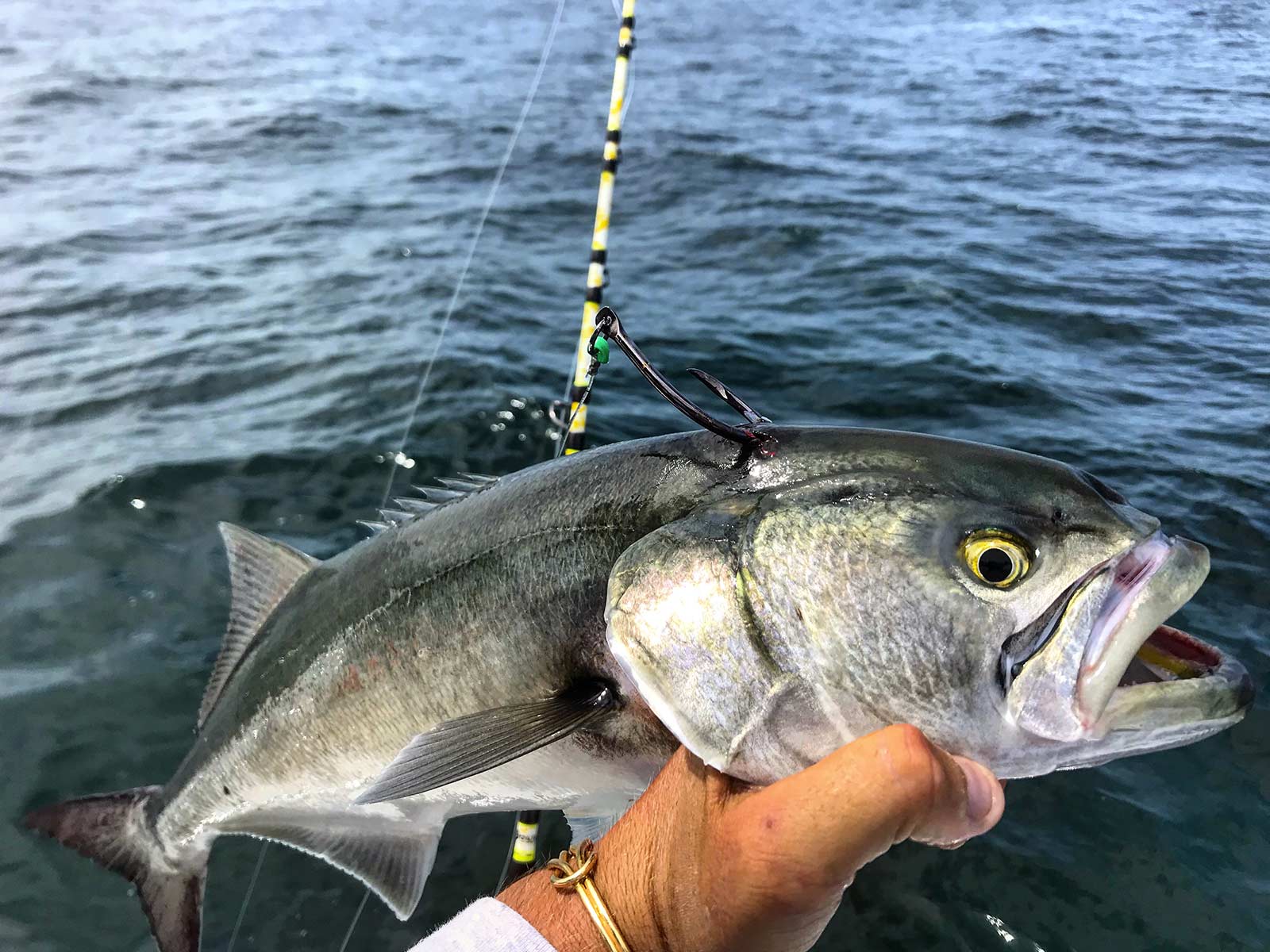
In the 1980s aircraft started taking off from the port of Chatham, flying over the Cape, identifying schools of giant tuna, and sending the coordinates to fishermen. Using harpoons, or rod and reel, they were able to catch massive amounts of the monstrous fish, often exceeding half a ton, and selling them for tens of thousands of dollars. The equipment used by these fishermen – huge leaders like ropes and rigidly unbending fishing rods – was and is far from our concept of sport fishing. Our charter offers a new, and more sporting, approach to fishing in these waters: light equipment and stand up fish fighting.


